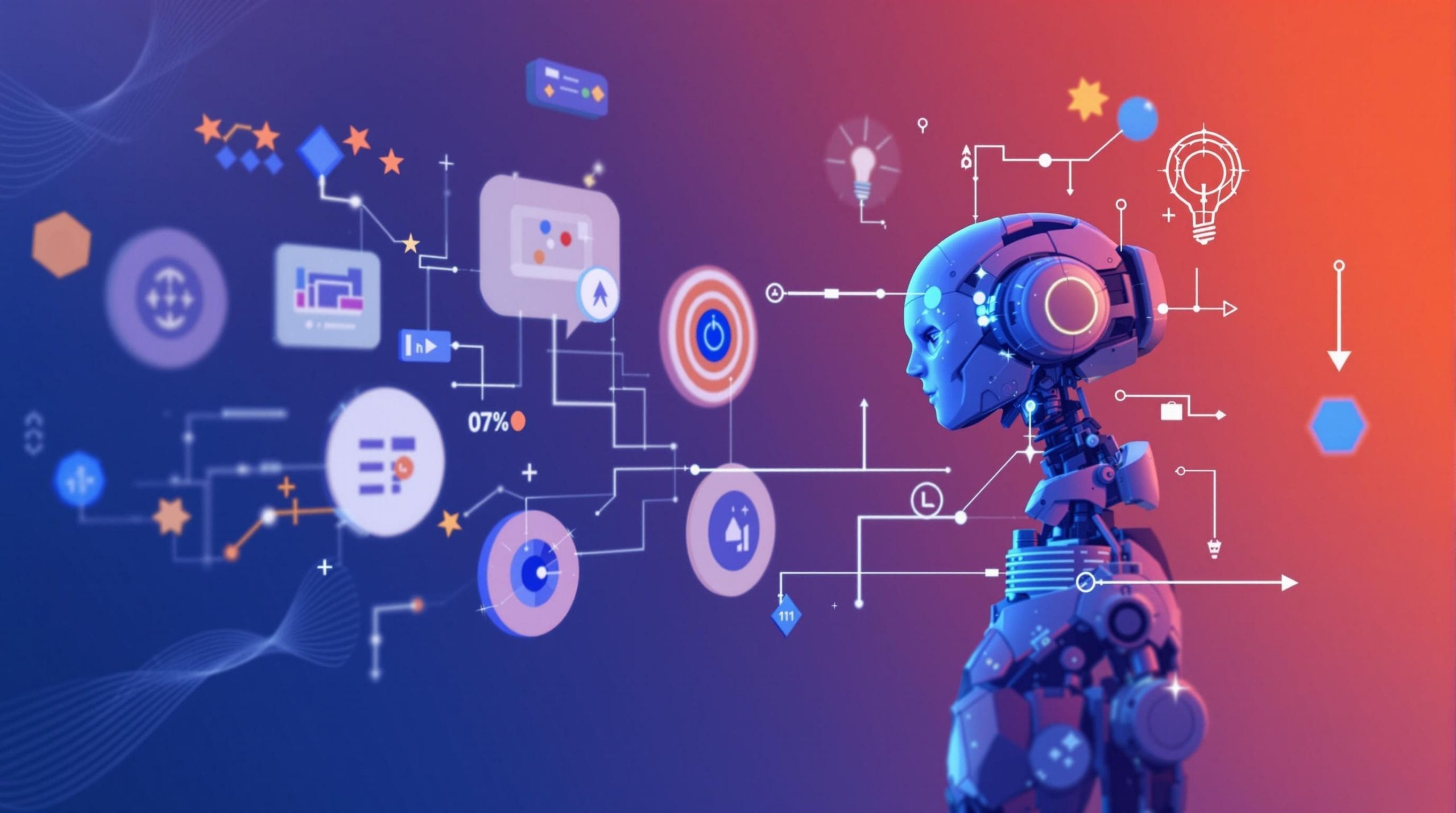The 3 High-Impact Skills You Can Start Learning in the Last Month of Summer
As summer draws to a close, the final month presents an ideal window for acquiring high impact skills that can transform your career trajectory before fall commitments intensify. With workforce training dominating 36% of total edtech funding in 2024 and employers expecting 39% of workers’ core skills to change by 2030, strategic skill development during this period offers exceptional returns on your time investment.
Key Takeaways
- AI literacy and workflow automation provide career insurance as AI moves from experimentation to serious workplace implementation in 2025
- Data analytics ranks as the top core skill across industries, with 77% of employers expecting enhanced productivity from upskilling efforts
- Active learning methods can improve test scores by 6% and reduce failure rates by up to 50% compared to passive learning approaches
- The final month of summer offers optimal timing for skill acquisition, as 70% of employee skills are learned on the job rather than through formal training
- A structured 4-week approach with measurable outcomes enables rapid skill development and portfolio creation for career advancement
AI Literacy and Workflow Automation: Your Career Insurance Policy
The shift from AI experimentation to serious workplace implementation creates unprecedented demand for AI-literate workers. According to HolonIQ, AI is moving beyond pilot programs into core business systems throughout 2025, supported by national policies and scaled solutions. This transformation makes AI literacy essential for maintaining career relevance in an evolving job market.
Workforce training accounts for 36% of total edtech funding in 2024, demonstrating employer investment in practical AI-enabled skill pathways. Additionally, 49% of U.S. HR departments now use AI to personalize learning experiences, creating internal pressure for employees to understand AI-powered processes. This dual demand from both external market forces and internal organizational changes makes AI skill development a strategic priority.
Your 4-week AI literacy plan focuses on immediate workplace applications rather than theoretical concepts. Here’s the progressive framework:
- Week 1: Master prompt patterns using role, task, constraints, and examples. Test with three work artifacts like emails, reports, or presentation outlines while tracking time savings
- Week 2: Build two no-code automations using Zapier, Make, or native platform tools. Focus on form intake to CRM workflows or document summarization processes
- Week 3: Create an AI copilot system with reusable prompt templates for recurring tasks. Document these as standard operating procedures
- Week 4: Compile a portfolio showcasing three before/after artifacts, two automations with metrics, and one page of role-specific prompts
Essential tools for this journey include ChatGPT and Claude for prompting, Zapier and Make for automation, plus AI features within Microsoft 365 Copilot and Google Workspace. Success metrics should track time saved per task, number of automated steps, and adoption rates among team members.
Data Analytics for Business Decisions: From Spreadsheets to Strategic Insights
Analytical thinking ranks as the top core skill across industries, with seven out of ten companies considering it essential according to the World Economic Forum. This demand creates exceptional opportunities for career skills for students and professionals who can bridge the gap between raw data and business insights within compressed timeframes.
Training investments in analytics deliver measurable returns, with 77% of employers expecting enhanced productivity and 70% anticipating improved competitiveness from upskilling efforts. The global workplace training market reached $401B in 2024, providing sustained organizational support for skill development initiatives. These statistics underscore why data literacy represents one of the highest-impact skills you can develop this summer.
The 4-week progression moves systematically from spreadsheet mastery to business intelligence dashboards:
- Week 1: Define one business question with a clear metric tree, clean available data, and compute descriptive statistics with trend visualizations
- Week 2: Build a KPI dashboard featuring 3-5 tiles showing metrics, trends, targets versus actual performance, and channel segmentation
- Week 3: Add comparison studies such as pre/post analysis or A/B testing outcomes, including confidence intervals and business context
- Week 4: Present findings with a one-page brief containing insights, three recommended actions, and expected business impact
Your toolkit progression starts with Excel and Google Sheets for data manipulation, then advances to Looker Studio and Power BI for interactive dashboards. Google BigQuery’s public datasets provide excellent practice material for SQL basics, while tools like DuckDB enable local data processing without complex setup requirements.
Active Learning Methods: How to Master Any Skill 50% Faster
Active learning approaches consistently outperform traditional passive methods, delivering a 6% average improvement in test scores and reducing failure rates by up to 50%. Research from Engageli demonstrates that active learning can reduce achievement gaps on examinations by 33%, making it particularly effective for diverse learners working within compressed timelines.
A MIT case study showed pass rates improving from 63% to 81% when active learning methods replaced traditional instruction approaches. For professional development, companies implementing in-depth training see 17% higher productivity and 21% higher profitability, with 92% reporting improved engagement. These outcomes make active learning essential methodology for maximizing your summer skill development efforts.
The contrast between passive and active approaches becomes clear when examining learning mechanisms:
- Passive approach: Watch-only video modules with minimal interaction and low retention rates
- Active approach: Weekly mini-projects, retrieval practice, peer reviews, live application sessions, and reflection documentation
Your 4-week active learning framework emphasizes measurable progress and practical application. Week 1 establishes baseline competency through pre-assessments and skill checklists. Week 2 implements daily 20-minute practice sessions with spaced repetition and public project demonstrations. Week 3 introduces peer feedback cycles and stretch challenges to address knowledge gaps. Week 4 culminates in capstone projects with job transfer documentation and team knowledge sharing sessions.
The Science Behind 30-Day Skill Acquisition
Research consistently shows that 70% of employee skills develop through on-the-job application versus only 10% through formal training programs. This finding from eLearning Industry validates why short, applied practice periods outperform lengthy theoretical courses for what to learn this summer decision-making.
Active learning methods demonstrate measurable effect sizes across diverse educational contexts, with project-based approaches showing particular strength for workplace skill application. Spaced repetition and retrieval practice optimize retention within compressed timeframes, making them ideal for self improvement goals that must fit within summer schedules.
The convergence of these research findings suggests that 30-day skill acquisition works best when combining frequent application, measurable outcomes, and peer feedback loops. This approach aligns with how professionals actually develop capabilities in workplace environments, creating stronger transfer potential compared to traditional classroom-style learning.
Your 4-Week Implementation Blueprint
Success in skills to learn in summer requires structured daily commitments and progress tracking systems. Each skill demands 20-30 minutes of daily focused practice, with specific deliverables marking weekly milestones. This time management approach ensures consistent progress without overwhelming existing commitments.
Integration strategies focus on leveraging existing work tools and datasets rather than requiring new software purchases or permissions. For AI literacy, start with tasks you already perform daily. For analytics, use data you already access regularly. For active learning, apply techniques to skills you’re already developing through other means.
Progress tracking relies on specific KPIs for each skill area. AI projects measure time savings per task and automation step counts. Analytics initiatives track decision latency reduction and dashboard usage rates. Active learning documents pre/post assessment scores and job transfer instances. These metrics provide objective evidence of skill development for portfolio presentation.
Measuring Your Return on Investment
Quantifiable metrics transform skill development from personal enrichment into professional development assets with demonstrable value. AI literacy projects should document minutes saved per automated task, reduction in manual process steps, and error rate improvements. Analytics skills generate measurable outcomes through faster decision cycles, increased data-backed choices, and improved forecasting accuracy.
Portfolio artifacts serve as tangible evidence of capability growth. Your AI prompt library with 10+ tested templates demonstrates systematic approach to automation. KPI dashboards with before/after decision timelines show business impact from improved analytics. Active learning documentation including peer feedback and project iterations proves commitment to continuous improvement.
Career impact indicators extend beyond immediate skill acquisition to long-term positioning advantages. Productivity gains make you more valuable to current employers. Competitiveness improvements position you for advancement opportunities. Skill transferability creates optionality for career pivots or lateral moves into high-growth areas.
Getting Started This Week: Your Quick-Start Checklist
AI literacy begins with identifying three repetitive tasks you perform weekly. Write your first prompts using role-task-constraints-examples format, then measure baseline time requirements versus AI-assisted completion. Document successful prompts as reusable templates for future application.
For those looking to learn python basics alongside analytics skills, start by defining one KPI that matters to your role or organization. Access available data sources, even if they’re simple CSV exports from existing systems. Build your first dashboard with five tiles showing the metric, trend, target comparison, and basic segmentation.
Active learning implementation begins with setting specific weekly goals and downloading a spaced repetition application like Anki or Quizlet. Schedule your first peer review session, whether with a colleague, mentor, or online community member. Document your baseline competency to enable progress measurement throughout the month.
Resource recommendations emphasize free and low-cost options for immediate access. ChatGPT’s free tier suffices for prompt pattern learning. Google Sheets and Looker Studio provide complete analytics capabilities without software costs. Spaced repetition apps offer free versions with adequate functionality for 30-day sprints.
Making It Stick: From 30 Days to Career Transformation
Beyond the initial month, skill development requires integration
news via inbox
Get our best unfiltered stories and boldest ideas delivered straight to your inbox.












